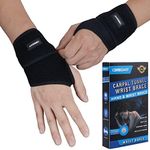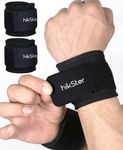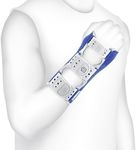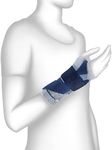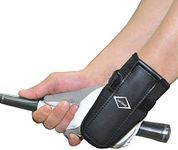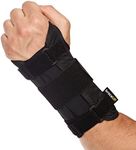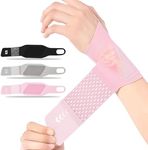Buying Guide for the Best Golf Wrist Braces
Choosing the right golf wrist brace can make a big difference in your comfort, performance, and injury prevention on the course. The main goal of a wrist brace is to provide support, stability, and sometimes compression to your wrist joint, especially if you have a history of pain, injury, or want to avoid strain during your swing. When shopping for a golf wrist brace, it's important to consider how it fits, the level of support it offers, and how it feels during your swing. Understanding the key features will help you find a brace that matches your needs and playing style.Support LevelSupport level refers to how much stability and restriction the brace provides to your wrist. This is important because too much support can limit your movement, while too little may not protect your wrist enough. Braces generally range from light support (flexible, minimal restriction) to moderate (some structure, but still allows movement) to high support (rigid, maximum stability). If you have a minor ache or want to prevent fatigue, a light support brace is usually enough. For ongoing pain or mild injuries, moderate support is a good balance. If you are recovering from a significant injury or need to prevent re-injury, a high-support brace may be best. Your choice should depend on your wrist health and how much movement you want to retain during your swing.
Material and BreathabilityThe material of the wrist brace affects comfort, durability, and how well it manages sweat. Common materials include neoprene (soft, stretchy, and warm), elastic fabrics (lightweight and breathable), and sometimes leather or rigid plastics for extra support. Breathability is important because golf is often played in warm weather, and a brace that traps heat or moisture can become uncomfortable. If you play in hot conditions or sweat a lot, look for braces with mesh panels or moisture-wicking fabrics. If you need more warmth for joint pain, a thicker material like neoprene might be better. Choose a material that matches your comfort needs and the climate you usually play in.
Adjustability and FitAdjustability refers to how well you can customize the fit of the brace to your wrist. This is important because a good fit ensures the brace stays in place and provides the right amount of support without being too tight or too loose. Braces may use Velcro straps, hook-and-loop closures, or elastic bands for adjustment. Some are sized (small, medium, large), while others are one-size-fits-most. If you want a personalized fit or have an unusual wrist size, look for braces with multiple adjustment points. If you prefer convenience, a slip-on or elastic model may be easier to use. Always make sure the brace feels snug but not restrictive, and check if it interferes with your grip or swing.
Flexibility and Range of MotionFlexibility is about how much movement the brace allows your wrist. This is crucial for golf, where a natural wrist motion is important for a good swing. Some braces are designed to limit movement to prevent injury, while others are more flexible and allow a full range of motion. If you need to protect an injured wrist, a less flexible brace may be necessary. If you are using the brace for mild support or prevention, a more flexible design will let you swing more naturally. Think about your playing style and whether you need to restrict movement or just want a little extra support.
Ease of Use and MaintenanceEase of use covers how simple it is to put on, take off, and care for the brace. This matters because you want a brace that fits into your routine without hassle. Some braces are easy to slip on, while others require more effort to adjust. Maintenance includes how easy it is to clean the brace—some are machine washable, while others need hand washing. If you play often, look for a brace that is easy to clean and quick to dry. If you have limited dexterity, choose a design that is simple to put on and remove.

